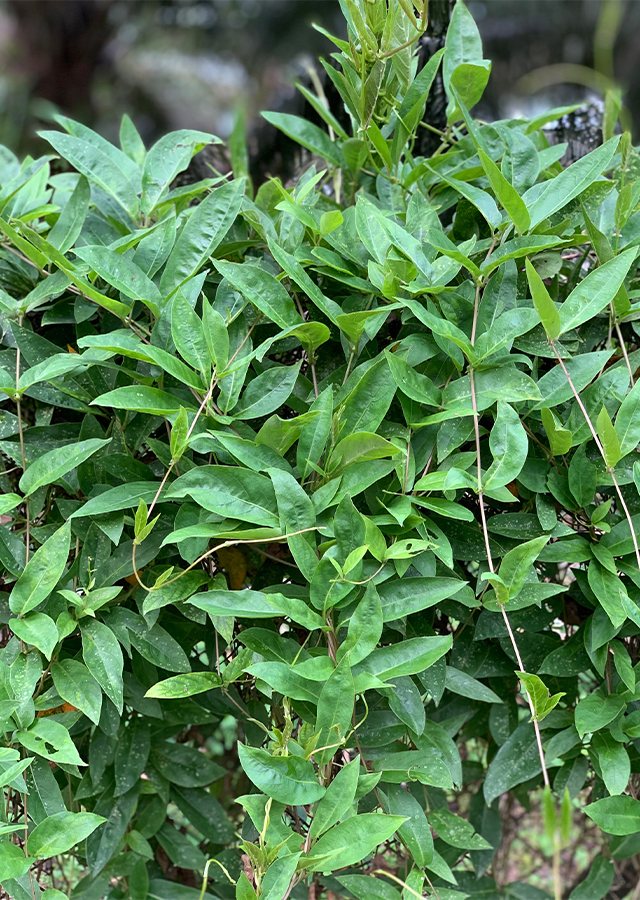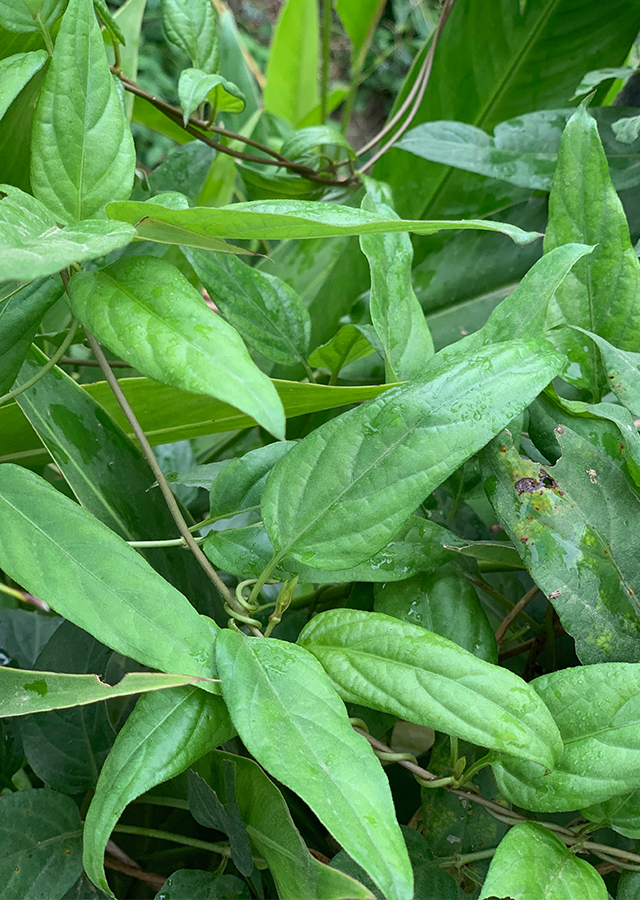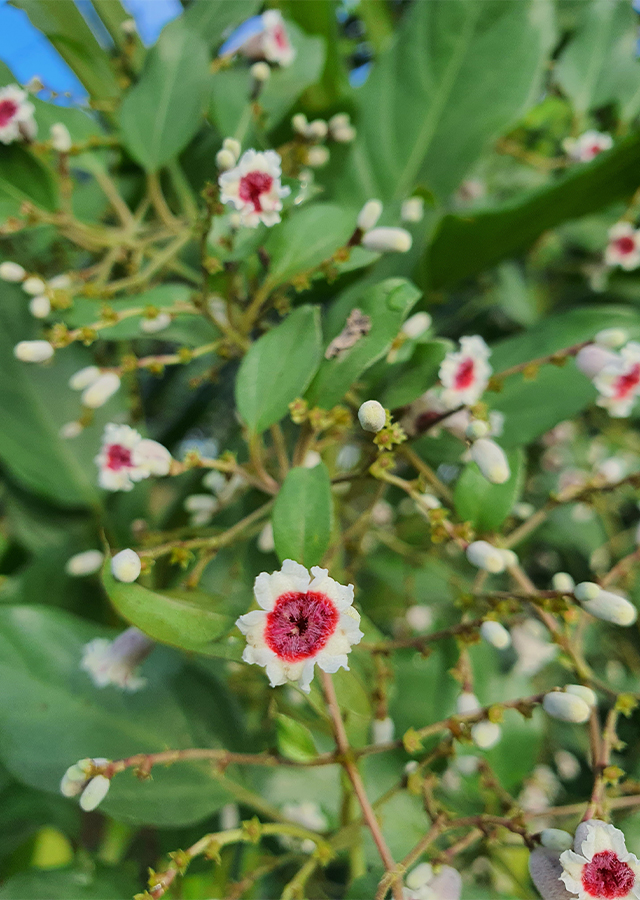Skunk Vine
Paederia foetida L.
Rubiaceae
Location in our garden
Principal



Synonym
Apocynum foetidum Burm.f.
Gentiana scandens Lour.
Hondbesseion foetidum (L.) Kuntze
Habitus
Climbers. A fast-growing, perennial climbing plant, stems 1.5 - 7 m long .
Part Used
Leaves
Bark
Fruit
Roots
Growing Requirements
Need Shade
Habitat
Wetland
Riverbanks
Forest
Coastal
Roadside
Shrublands
Grassland
Overview
Paederia foetida is native to East Asia and South-East Asia. It was introduced to the oceanic islands of Mascarene and Hawaii and later to the continental USA during the 19th century. It is ranked as a Category I (high impact) invasive species, invading and affecting natural areas by the Florida Exotic Pest Plant Council.. It is a common medicinal plant in the Orient, where it is sold in local markets as a medicinal herb and sometimes grown as an ornamental.
Vernacular Names
Kon (Thailand), Niu pi dong (Chinese), Kantutan (Phillipines), Taiwan momiji (Japan), Daun kentut (Malaysia), Maile pilau (Hawaii).
Agroecology
In thickets and trees, even along woodland margins, P. foetida is ruderal, in secondary evergreen to deciduous forests and clearings in primary forests. It also grows on steep, forested slopes, or on sandy or rocky seacoasts, in montane vegetation up to 3,000 m. Succeeds as long as it is well drained, in every fertile soil. Plants are broadly adaptable to various light levels, soil types, and salt environments. A sunny, sheltered position is needed.
Morphology
- Stems - hairy or smooth slender vine, that twine into other plants for support.
- Leaves - opposite, simple, broadly lanceolate to elongated-ovate, 6-10 cm x 3.5-5 cm, pointed at the tip, rounded or slightly heart-shaped at the base, emitting a distinct foetid odor when crushed.
- Flowers - arranged on lax scorpioid or double scorpioid inflorescences (cymes) with long stalks, corolla funnel-shaped, 4-5 lobes, margins crinkled, 7-11 mm long, white to cream, dark purplish red within, outer surface pubescent.
- Fruit - a capsule, light brown to yellow or reddish-brown, glossy, nearly globose, 4-6 mm diameter crowned by persistent calyx lobes; containing one or two seeds.
- Seeds - ellipsoidal, plano-convex or convexo-concave, without conspicuous wings, black, often covered with raphides.
Cultivation
Generative propagation is by seeds, and by layering (vegetative propagation).
Chemical Constituents
Aseperuloside, deacetylasperuloside, paederosid, scandoside, iridoid glycosides, paedorosidic acid, 6β -O-sinapoylscandoside, essential oils, arbutin, oleanolic acid, sitosteron.
Traditional Medicinal Uses
- Anodyne, antirheumatic, antivinous, astringent, carminative, depurative, diuretic, restorative, and vermifuge leaves are the leaves. They are widely used to treat intestinal problems such as stomach pain, colic, cramps, dysentery and flatulence, and are also used to treat rheumatism and gout. It has shown anticancer activity against human nasopharyngeal epidermoid carcinoma. It is called astringent, and in children it is used to treat diarrhoea. The leaves is also used to treat infertility and paralysis.
- Anti inflammatory activity in oedema was shown by the water soluble fraction of the aerial sections.
- It is considered that the bark and the root are emetic.
- The leaves are used externally to treat swellings and bruises in general, and are mashed and then rubbed for ear pain, nasal ulcerations and swollen eyes. The leaf juice is used in children to treat diarrhoea.
- In case of indigestion, piles, inflammation of the spleen, and pain in the chest and liver, root juice is recommended. It will help to extract toxins that are collected in the system.
- The fruit is used for blackening teeth in some parts of India, and is also considered a remedy for preventing and treating toothaches.
Part Used
Reference Sources
- CABI. (2015). Invasive Species Compendium. Paederia foetida (skunkvine). https://www.cabi.org/isc/datasheet/38458. 11-10-2020.
- Fern, Ken. (2014). Useful Tropical Plants. Paederia foetida. http://tropical.theferns.info/viewtropical.php?id=Paederia+foetida. 11-10-2020.
- StuartXchange. (2018). Philippine Medicinal Plants: Kantutan. http://www.stuartxchange.org/Kantutan.html. 11-10-2020.


